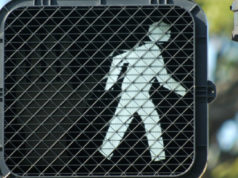Juvenile justice is typically viewed in society as a form of rehabilitation. And it is, definitely. The whole idea is that young people who have made some mistakes should have the opportunity to redirect their lives before adulthood. Later, the choices are going to be only harder, so that’s their moment for change and healing. But it’s not all about good-intention goals.
The Numbers
America continues to lock up youth at higher rates than nearly all other developed countries. According to the Office of Juvenile Justice and Delinquency Prevention (OJJDP), which is dedicated to preventing youth from entering the juvenile and criminal systems, the average one-day count of U.S. youth in residential placement facilities in 2021 was 24,894. And you’d think that they are violent offenders. But that isn’t the case.
More than 67% are held on truancy, probation, or minor drug charges, which leads to thousands of teens being taken out of schools/homes and getting locked up in environments that make them more vulnerable.
Not only does it make them more vulnerable, but it is also sometimes unclear what it is supposed to teach them.
Three Ways Detention Backfires
Rather than correcting behavior, detention too frequently makes problems worse:
Interrupted Education: Credits don’t necessarily transfer back, which gets teens behind in school.
Psychological Decline: Fears and traumas intensify in restrictive environments with little counseling.
Exposure to Violence: Being around angry classmates or stressed staff makes harm seem normal instead of intervening to prevent it.
Detention often exacerbates the issues they already have, rather than resolving them. Missing from school, mental health decline, and exposure to violence are separately big problems, but combined, they’re a real danger to juvenile well-being and the future.
When Safety Becomes the Question
In addition to disrupted education and possible mental breakdown, safety in facilities ranks at the top of concerns. Investigations within the nation confirm neglect, mistreatment, and even abuse. Short staffing and inadequate monitoring make centers vulnerable to permanent closure.
But if you’re a parent and you’re looking to find justice, you’ll have to think about what the rules and regulations are in the state you live in. Let’s take Texas and Illinois as a comparison example.
Texas: There’s no minimum age (Juvenile Justice Code protections still apply). Detention hearing must happen within two business days; probable cause must be found within another 2 days. Family Code Chapter 57 enforces explicit protections. Written notice of rights at first contact is required. Custody disputes are handled under Family Code Chapter 152 (family and abuse/neglect cases). Cash bail in criminal cases; juvenile cases use detention hearings.
A local (or at least a state-licenced) lawyer who’s familiar with the court, police, and the various youth detention institutions will know all these things. If they are also experienced with such cases, you’ll have an excellent chance of seeking justice.
Illinois: Children as young as 10 can be placed in juvenile detention. Minors (under 12) can’t be kept in jail/lockup more than 6 hrs. Juveniles in facilities must be checked at least once every 15 minutes. Victims’ rights are mainly covered under general crime victim statutes. Victims are allowed to be compensated (practices vary by county). Courts can adjust custody in abuse/neglect/delinquency cases (Uniform Child Custody rules). Pretrial release based on risk instead of bail money (Illinois SAFE-T Act, 2023).
In Illinois, victims of exploitation in custody need to contact a youth detention center sexual abuse lawyer in Illinois to protect their rights and seek justice. Only a lawyer who’s licensed to operate in Illinois will know which specifics in our law are important in such cases.
The Cost Beyond the Walls
Even apart from abuse, the consequences are high:
Economic Cost – Detention costs over $200,000 (USD) a year per child, much more than community-based strategies. Cycle of Recidivism – Teens in jail are more likely to become part of the system again as adults. Strain on the Family – Parents struggle to stay in touch while facing stigma and confusion in the justice system.
The failures of youth detention aren’t just harming individuals; they’re also breaking down communities. And whether that decision was about healing or harm, it will affect what this young person grows into. This is extremely important locally.
If you think about places that surround Fort Worth, and the city itself, do you want our youth to be moral? Do you want them to grow into good people who will teach their own children all the good qualities? If so, then think of youth detention as a turning point; every court and every decision enforced by the community today will echo for decades.
Conclusion
If we, as a people, focus only on the punishment aspect, then we won’t get far. The only thing that punishment instills is fear and obedience/discipline. And sure, they work. But that’s not the problem. Unless we want to live under a form of government such as tyranny or a dictatorship. But we don’t.
The goal is also to help, to rehabilitate. We want to guide young people so that they may grow and educate themselves. Obedience won’t force change. Rehabilitation will address the issue at its root level.
Only this way can we have a society filled with healthy and moral people, individuals who won’t cause issues that led to these situations in the first place.












